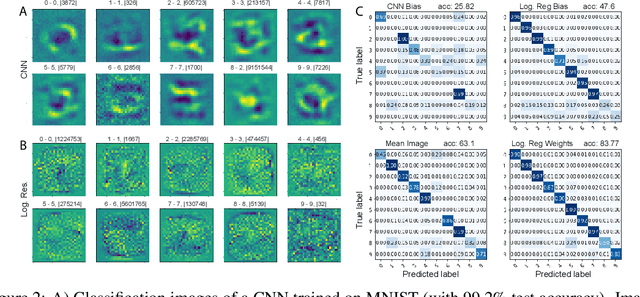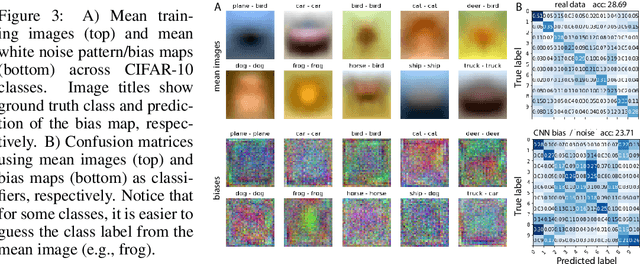White Noise Analysis of Neural Networks
Paper and Code
Dec 23, 2019



A white noise analysis of modern deep neural networks is presented to unveil their biases at the whole network level or the single neuron level. Our analysis is based on two popular and related methods in psychophysics and neurophysiology namely classification images and spike triggered analysis. These methods have been widely used to understand the underlying mechanisms of sensory systems in humans and monkeys. We leverage them to investigate the inherent biases of deep neural networks and to obtain a first-order approximation of their functionality. We emphasize on CNNs since they are currently the state of the art methods in computer vision and are a decent model of human visual processing. In addition, we study multi-layer perceptrons, logistic regression, and recurrent neural networks. Experiments over four classic datasets, MNIST, Fashion-MNIST, CIFAR-10, and ImageNet, show that the computed bias maps resemble the target classes and when used for classification lead to an over twofold performance than the chance level. Further, we show that classification images can be used to attack a black-box classifier and to detect adversarial patch attacks. Finally, we utilize spike triggered averaging to derive the filters of CNNs and explore how the behavior of a network changes when neurons in different layers are modulated. Our effort illustrates a successful example of borrowing from neurosciences to study ANNs and highlights the importance of cross-fertilization and synergy across machine learning, deep learning, and computational neuroscience.
 Add to Chrome
Add to Chrome Add to Firefox
Add to Firefox Add to Edge
Add to Edge